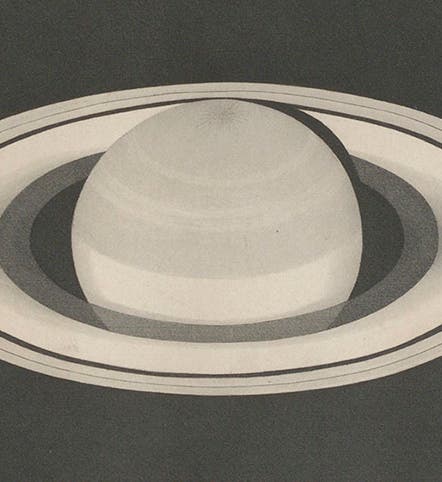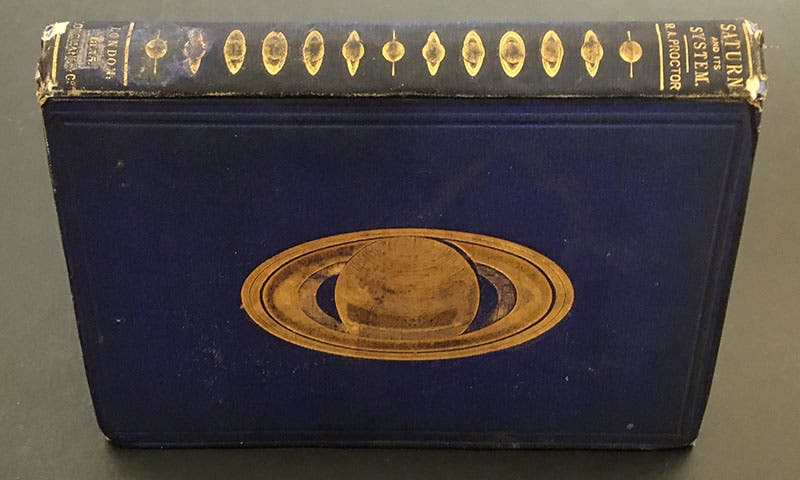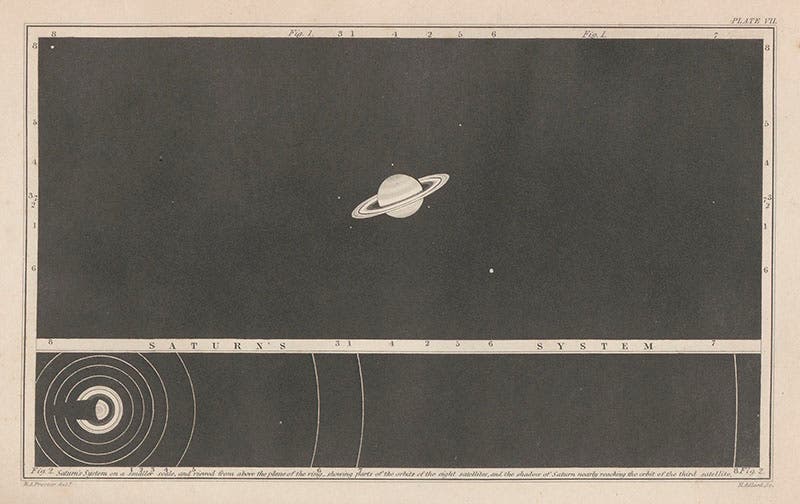Scientist of the Day - Richard Proctor
Richard Anthony Proctor, an English astronomer and writer, was born Mar. 23, 1837. Proctor was one of the great popularizers of astronomy of the Victorian era. We have 30 books by Proctor in our collections. He wrote so much because he wrote for a living, his steady source of income having vanished early on with the crash of a bank. He was more knowledgeable than many popular writers, in that he actually practiced astronomy, was a member of the Royal Astronomical Society, and even published a map of Mars with a new nomenclature system, which was popular until it was replaced by the later nomenclature system of Giovanni Schiaparelli.
We thought we would feature today Proctor's very first book, published when he was only 28 years old, and still one of his finest publications. Saturn and its System (1865) was an attempt to give an up-to-date description of everyone's favorite planet, especially so in the 19th century, when a new dark inner ring (the crepe ring) has just been discovered. The book had a handsome decorative blue publishers binding, with a view of Saturn on the cover and its different appearances as seen from Earth on the spine (second image).
The most arresting illustration is the engraved frontispiece, a double folding plate that presents three views of Saturn – with the ring edge-on, at an intermediate position, and at its most extreme tilt, a range that it would take you 15 years to see through the telescope. We show both the full plate (fifth image), and a detail of the bottom figure, where you can see the inner crepe ring and the engraving technique it took to convey it (first image). Proctor did his own illustrations for the book; the plates were skillfully engraved by R. Alard, about whom we have been able to learn very little – the fate of many engravers, alas.
Saturn and its Systems was well illustrated, with 12 full-page engravings – unusual for a popular book like this, most of which used cheaper wood engravings. We show two other plates from Proctor’s book.
One plate (sixth image) has two views of Saturn; the top figure, with a very black sky, depicts Saturn, its ring, and the 8 moons that were known at the time (the 8th one is easy to miss, in the upper left corner). The bottom figure shows the Saturnian system as viewed from above, where you can see the shadow of Saturn on the rings behind, and the orbits of the 8 moons added in.
The other plate we show here (seventh image) depicts, in the first figure at top, 16 different appearances of Saturn as it moves around the Sun, and in the bottom figure, a detail of Saturn's rings, with the intermediate gap, the Cassini division, starkly drawn, and the new crepe ring on the inside.
If you are sharp, you might have noticed that Proctor's birthdate, Mar. 23, does not coincide with the date of this post, Mar. 3. That is because of a slip by yours truly. Proctor was honored by a caricature in Vanity Fair on Mar. 3, 1883 (eighth image), and so in our search for a candidate for a suitable Scientist of the Day for Mar. 3, Proctor came up, and I did not notice that this was not in fact his birthday. We will transfer this to a birthday post at some future time. For now, enjoy this as a sneak preview. Dr. William B. Ashworth, Jr., Consultant for the History of Science, Linda Hall Library and Associate Professor emeritus, Department of History, University of Missouri-Kansas City. Comments or corrections are welcome; please direct to ashworthw@umkc.edu.











![Using an astrolabe to measure the depth of a well, woodcut in Elucidatio fabricae vsusq[ue] astrolabii, by Johannes Stöffler, 1513 (Linda Hall Library)](https://assets-us-01.kc-usercontent.com:443/9dd25524-761a-000d-d79f-86a5086d4774/a998eb50-55d2-4a88-ace2-a50aa5fa86e7/Stoffler%201.jpg?w=210&h=210&auto=format&fit=crop)

